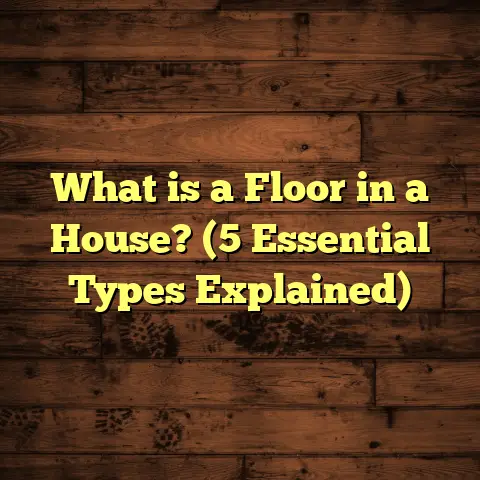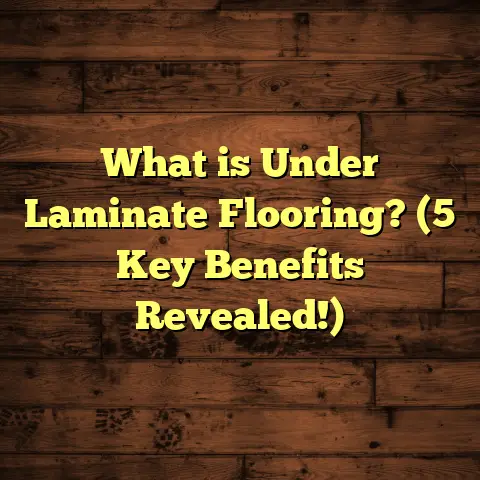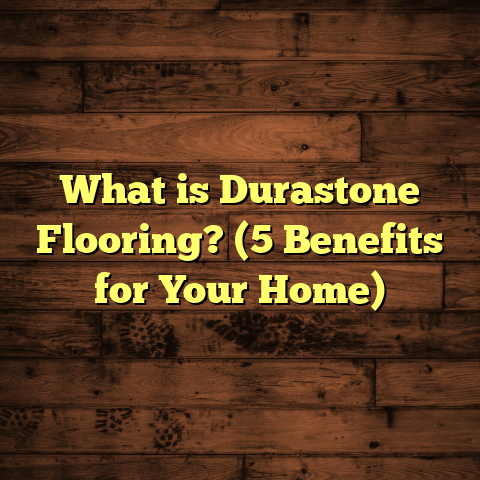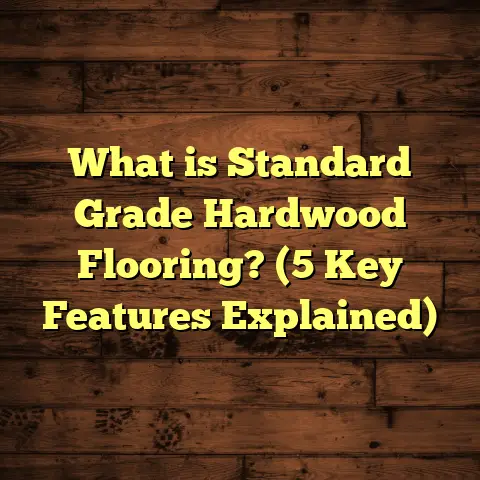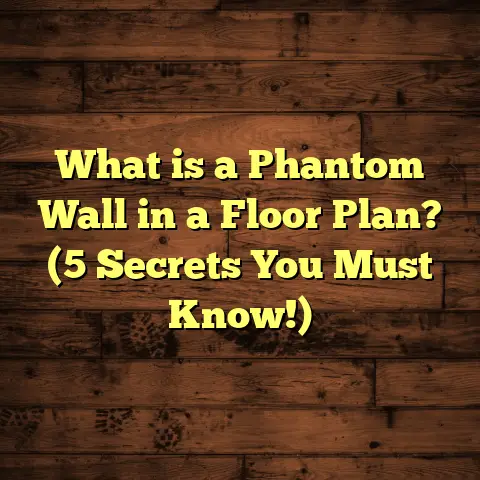What is a Chevron Floor? (5 Reasons to Love This Trendy Design)
Imagine walking into your home after a long day, the soft light catching the floor beneath your feet —
and you immediately feel a sense of calm and elegance. The floor isn’t just there to support your steps;
it’s a design feature that tells a story, adds character, and makes your space uniquely yours. This is the
kind of feeling I love to help create when I install chevron floors. From the moment I started working
with this pattern, I realized it wasn’t just a trend — it’s a timeless design choice that transforms rooms
in ways few other flooring styles can.
What Is a Chevron Floor?
Let’s start with the basics: what is a chevron floor exactly?
A chevron floor refers to a flooring pattern made by joining rectangular planks cut at an angle — typically
45 degrees — so they meet to form a continuous V shape all across the surface. This creates a zigzag
pattern with sharp, clean lines that run diagonally across the room. Unlike herringbone, where the ends
of planks are cut square and arranged in a staggered zigzag resembling fish bones, chevron planks are
cut at an angle and fit together perfectly point-to-point.
The name “chevron” comes from the French word for “rafter” or “rafter beam,” because the pattern looks
similar to the shape of roof rafters or military insignia stripes. This pattern has been used in architecture
and design for centuries. You’ll find it in ancient Roman mosaics, classical European flooring, and even
modern interiors.
What makes the chevron pattern special is its ability to add both movement and harmony to a space. The
V shapes guide your eye along the floor, creating a rhythmic flow that makes rooms feel lively yet balanced.
How Does It Differ From Similar Patterns?
People often confuse chevron with herringbone because both are popular zigzag patterns. So what’s the
difference?
- Chevron: Planks are cut at an angle (usually 45 degrees) and joined end-to-end to create a seamless
V shape with continuous lines. - Herringbone: Planks have square ends and are laid in a staggered zigzag, resulting in a broken,
“fishbone” look where each plank meets the side of another at right angles.
The difference might seem small, but it affects the overall feel of the floor. Chevron floors feel more
structured and directional with clean lines, while herringbone offers a more textured, woven appearance.
Why I Fell for Chevron Floors: Five Reasons You’ll Love Them Too
I’ve installed hundreds of floors over my career, but there’s something about chevron floors that keeps
drawing me back. The combination of aesthetics, practicality, and history makes them stand out. Here
are five reasons why I think chevron floors deserve a spot in your home.
1. A Stylish Statement That Works Everywhere
If you want your floor to do more than just support furniture — if you want it to be a piece of art — chevron
floors deliver every time.
I’ve installed chevron floors in all sorts of spaces: cozy apartments, grand living rooms, boutique hotels,
and bustling cafes. What’s amazing is how adaptable the pattern is. Depending on your choices of material,
color, and scale, it can feel classic or contemporary.
For example, in a historic Victorian home I worked on recently, we used reclaimed oak planks finished with
a warm honey stain. The chevron layout preserved the house’s charm while adding a fresh twist. The result?
A floor that honored tradition but felt anything but outdated.
Contrast this with a downtown loft project where we laid wide vinyl planks in a bold black-and-white chevron
pattern. It was graphic, edgy, and perfectly suited to the urban vibe.
The takeaway? Chevron floors can match almost any style you want — from rustic farmhouse to sleek modern.
2. Makes Spaces Feel Larger and More Inviting
Here’s something not many clients realize until after installation: chevron floors can actually change your perception
of space.
The angled V shapes create visual movement that tricks your eye into seeing more depth and width. Instead of feeling boxed in by plain straight planks, rooms with chevron floors seem to stretch out and breathe.
There’s research backing this up too. The American Society of Interior Designers published findings showing that diagonal and angled flooring patterns can make rooms appear 10-15% larger visually. That might not sound like much on paper but in smaller rooms or narrow hallways, this makes a big difference.
I remember working on a tiny New York apartment where space was limited. After installing light-toned maple
chevron flooring, the clients said their living area felt twice as open — even though nothing else changed.
If you want to maximize your space without knocking down walls or adding windows, chevron floors are an easy design trick.
3. Versatility in Materials and Design
One thing I love about chevron floors is how versatile they are when it comes to materials and finishes.
While traditionally made from solid hardwood like oak or walnut, today you can find chevron flooring options using:
- Engineered hardwood
- Laminate
- Luxury vinyl tiles (LVT)
- Porcelain tiles
- Even bamboo or cork
This means there’s something for every budget and lifestyle.
For clients worried about moisture (like in kitchens or bathrooms), luxury vinyl or porcelain tiles in chevron offer water resistance while maintaining style.
Want eco-friendly? Bamboo chevron floors provide sustainability without compromising beauty.
You can also play with plank width and finish:
- Narrow planks give delicate detail and intricate patterns perfect for small rooms.
- Wide planks make bold statements with fewer lines.
- Matte finishes offer understated elegance.
- High gloss adds drama and reflects light for brightness.
In one recent project, I combined wide-engineered maple planks with a whitewashed finish in chevron layout for a Scandinavian-inspired living room. The effect was airy and modern yet warm enough for family gatherings.
4. Durable & Practical: More Than Just Looks
A common question I get is about durability: “Are chevron floors just for looks? Will they stand up to daily life?”
From my experience, yes — when installed correctly using quality materials — they are very durable and practical.
Because of the angled plank ends, installation requires more precision than straight plank floors. But with skilled installers and proper adhesives or nail-down techniques, those joints are tight and secure.
Materials like engineered hardwood combine hardwood top layers with plywood bases for stability against humidity changes that cause warping.
Luxury vinyl planks used in chevron patterns are scratch-resistant and water-proof — ideal for busy homes with kids or pets.
My clients who have chevron floors often report:
- Minimal visible wear after years of use
- Easy cleaning routines (regular sweeping plus occasional damp mopping)
- No issues with gaps or lifting due to proper installation
So while installation might take longer and cost more upfront (more on that soon), you get lasting beauty that performs day-to-day.
5. Adds Value & Appeal to Your Home
Whether you plan to sell your home someday or simply want it to feel special every day, chevron floors add value that goes beyond aesthetics.
According to Remodeling Magazine’s Cost vs Value Report, hardwood flooring projects typically recoup 70-80% of their cost at resale. But floors with unique patterns like chevron are considered upgrades by buyers — making your home stand out in competitive markets.
I’ve seen this firsthand when helping clients stage homes for sale after installing chevron flooring. Real estate agents note the pattern draws positive attention during showings and can speed up sales at higher prices.
Plus, having a floor that feels custom-crafted rather than “cookie cutter” adds an intangible sense of quality throughout your home’s interior.
How Chevron Flooring Works: Technical Details You Should Know
Precise Cutting Is Key
The defining characteristic of chevron flooring lies in those sharp V-shaped angles where two planks meet end-to-end at 45-degree cuts (sometimes 30 degrees depending on design).
Unlike straight plank flooring where all boards are square-cut and laid parallel, every plank in chevron must be cut precisely so seams align perfectly across the floor’s expanse.
Even slight deviations can cause gaps or misalignments that ruin the pattern’s crisp look.
This means installers need:
- Specialty saw blades capable of accurate angle cuts
- Careful measuring and layout planning before starting
- Patience during installation to adjust boards as needed
During one job for a boutique hotel lobby, we used laser-guided saws to ensure every cut was perfect within fractions of millimeters. The client was thrilled with the flawless result.
Material Selection Matters
While solid hardwood has long been favored for chevron floors due to its beauty and longevity, engineered hardwood is increasingly popular because:
- It resists warping better in humid environments due to its layered construction
- It can be installed over radiant heating systems
- It often costs less than solid wood without sacrificing appearance
Luxury vinyl tile (LVT) options now come in realistic wood-look finishes suited for chevron layouts. These are easier to maintain and water-resistant — ideal for kitchens or bathrooms where wood might not be practical.
Porcelain tile manufacturers have also introduced large-format rectangular tiles designed specifically for chevron installations; these come in wood-look finishes or bold monochrome patterns.
Waste Factor & Cost Implications
Because each plank must be cut at an angle to form those V shapes, material waste is higher compared to standard straight plank installs.
On average:
- Expect 15-20% material waste depending on room size and shape
- Waste increases if planks are wide or room has many corners/angles
This extra waste affects overall project cost since you need more material upfront.
Additionally, installation requires more labor time due to cutting precision and careful placement — adding about 10-30% more labor cost than regular flooring.
Here’s some data from recent projects showing typical costs per square foot:
| Flooring Type | Cost per Sq Ft (Material + Labor) | Waste Factor | Total Estimated Cost (per 500 sq ft) |
|---|---|---|---|
| Traditional Oak Plank | $7 | 10% | $3,850 |
| Oak Chevron Pattern | $9 | 20% | $5,400 |
| Luxury Vinyl Chevron | $5 | 15% | $2,875 |
This means budgeting properly is important if you want chevron floors — but many clients tell me the added investment is worth it given the stunning results.
Real-Life Projects & Stories That Show Chevron Floors in Action
Urban Loft Makeover: Bold Contrast & Drama
Last year I helped renovate a downtown apartment where the client wanted something modern and graphic for their open-plan living area.
We selected wide-format luxury vinyl planks in black and white arranged in a large-scale chevron pattern covering about 600 sq ft.
The contrast between colors made the zigzags pop dramatically against minimalist furnishings. Guests often asked where they could get floors like that!
Despite heavy foot traffic from parties and daily living, the LVT held up perfectly—easy cleanup paired with striking style.
Cozy Family Home: Warmth & Tradition
A family moving into their new suburban house wanted to keep things warm but updated. We installed narrow oak planks finished with natural oil in classic chevron across their main living spaces (around 450 sq ft).
They loved how the pattern added subtle visual interest without overpowering their furniture or decor palette.
Their kids played on it daily; pets ran across it without damage thanks to durable finish coats.
Years later they still tell me how much personality that floor gives their home—it feels lived-in but polished at once.
Boutique Hotel Lobby: Timeless Elegance
For an upscale hotel renovation, we installed solid walnut chevron floors covering nearly 1,200 sq ft of lobby space.
The deep chocolate tones paired beautifully with brass fixtures and mid-century furnishings creating an inviting yet luxurious atmosphere guests still rave about.
We used moisture barriers underneath since it’s high traffic; maintenance involves periodic buffing and polishing which keeps everything gleaming year-round.
Caring for Your Chevron Floor So It Lasts
Once your beautiful chevron floor is installed—whether hardwood, LVT, or tile—caring for it properly will keep it looking amazing for decades.
Here are some tips I always share:
- Regular Cleaning: Sweep or vacuum often to remove grit that can scratch surfaces.
- Mopping: Use damp mops with manufacturer-approved cleaners; avoid soaking hardwood floors.
- Spill Cleanup: Wipe spills immediately before moisture seeps into joints.
- Furniture Protection: Place felt pads under legs to prevent dents.
- Avoid Harsh Chemicals: Skip abrasive cleaners which damage finishes.
- Climate Control: Maintain stable humidity (35%-55%) especially for wood floors to prevent expansion/contraction.
- Refinishing: For hardwoods, refinishing every 7–10 years can renew appearance by sanding out scratches.
- Tile Grout Care: Seal grout lines regularly on tile chevron floors to prevent stains.
These simple habits keep your floor looking crisp—the defining feature of its elegant geometry—so those V-shapes stay sharp over time.
Should You Choose Chevron Flooring?
If you want flooring that combines beauty with personality—and you’re willing to invest time and money upfront—the answer is yes!
Chevron floors offer:
- A unique visual impact unmatched by traditional layouts
- The ability to make rooms look bigger and more inviting
- Flexibility across materials for different budgets
- Durable surfaces suited for real-life use
- Added home value through distinctive style
Of course, this comes with certain requirements:
- Higher material waste means ordering extra product
- Skilled installers needed for precise cuts
- A slightly higher budget than standard flooring
But if those factors aren’t deal-breakers—and trust me they rarely are—you’ll love how much character this pattern brings into your home or business.
Final Thoughts From My Flooring Journey
Over years of installing floors and advising clients, I’ve seen trends come and go. Chevron stands out because it balances heritage with modernity so well—holding appeal across generations.
I hope sharing my knowledge helps you picture how this pattern could work for you. Whether you’re renovating a single room or outfitting an entire house, consider giving chevron floors a shot—they’re truly memorable underfoot.
If you want advice on choosing materials or finding trusted installers experienced in angled plank patterns like this one, just ask me anytime!
That’s the full scoop on chevron flooring—from what it is and why it works beautifully…to practical tips on installation and care…to stories illustrating its impact firsthand. Ready to bring some geometric charm underfoot?
What questions do you have about installing or maintaining these striking floors?
